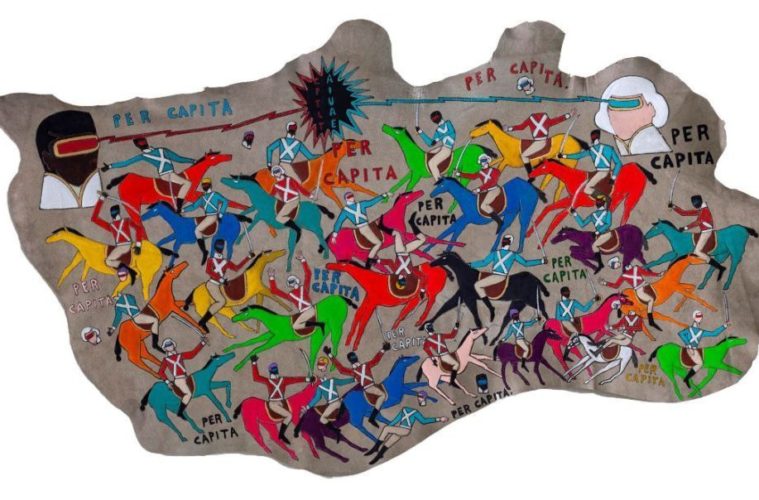Umar Rashid, aka Frohawk Two Feathers, aka Kent Cyclone (it’s a long story) practices a cheerful, bloody anti-Imperialist critique of colonialism in his art, using an eccentric folkloric visual style to radically reimagine power structures of geopolitical violence. He regularly generates fantastical, fully imagined societal mythologies – sweeping sagas of war, conquest, religion, enslavement, revolution and state-sponsored pageantry.
For most of this enterprise the timing and location of these epics has been along the distant past/parallel universe/counterfactual history continuum, with densely detailed, finely narrated and character-driven narratives that seemed both familiar and plausible as far-off, untold origin stories. But in recent years, Rashid has increasingly located his symbol-rich historiography in contemporary settings, especially Los Angeles, from Malibu to Dodger Stadium.
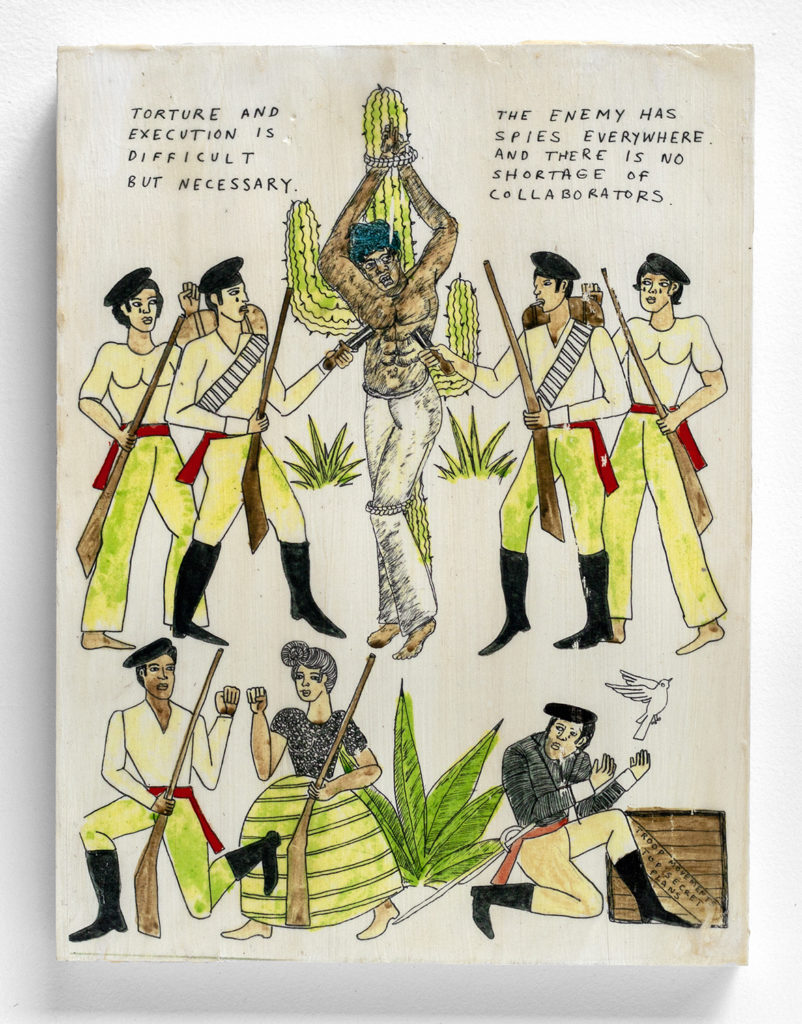
Umar Rashid, Torture and Execution is Difficult but Necessary, 2017. Unique zero transfer graphic print with ink and acrylic on birch panel, 12 x 9 inches (Courtesy of transformative arts. Photo by Monica Nouwens)
His exceptionally fine works currently on view at both the Hammer and the Huntington as part of the Made in L.A. biennial make much of this transposition to the present moment plain in his Battle of Malibu series, in which the story no longer employs total fiction and instead, makes explicit references to the land-stealing and genocide across centuries of modern-day California’s history. Seeing that work in the context of the Huntington’s grounds and the aggressive gentility and whiteness of its admittedly gorgeous grounds and collections is a powerful moment.
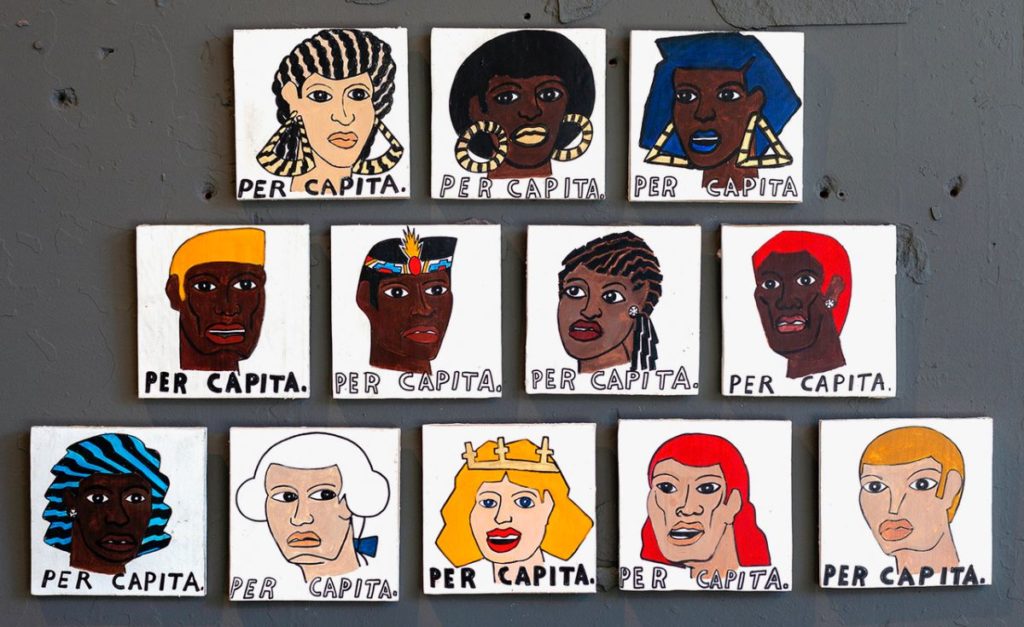
Umar Rashid, Per Capita: Hortense, Mahalia, Grace, Lamar, Biko, Wanda, Trell, Big Trell, Lucius, Stephanie, Rita, Candy, 2021. Acrylic on paper over panel, 7 x 7.5 inches each (Courtesy of transformative arts. Photo by Monica Nouwens)
Across town at the transformative arts gallery in downtown’s Historic Core neighborhood, Rashid’s installation of his 2021 COLA Fellowship project, Per Capita, continues on this journey to chronicle and recontextualize the realities and ongoing legacy of colonialism in Los Angeles. In this iteration of the big idea, Rashid focuses more tightly on the lived experiences, complicity and strategies for survival of individuals within the racialized, gendered and ideologically chaotic story of a city’s founding.
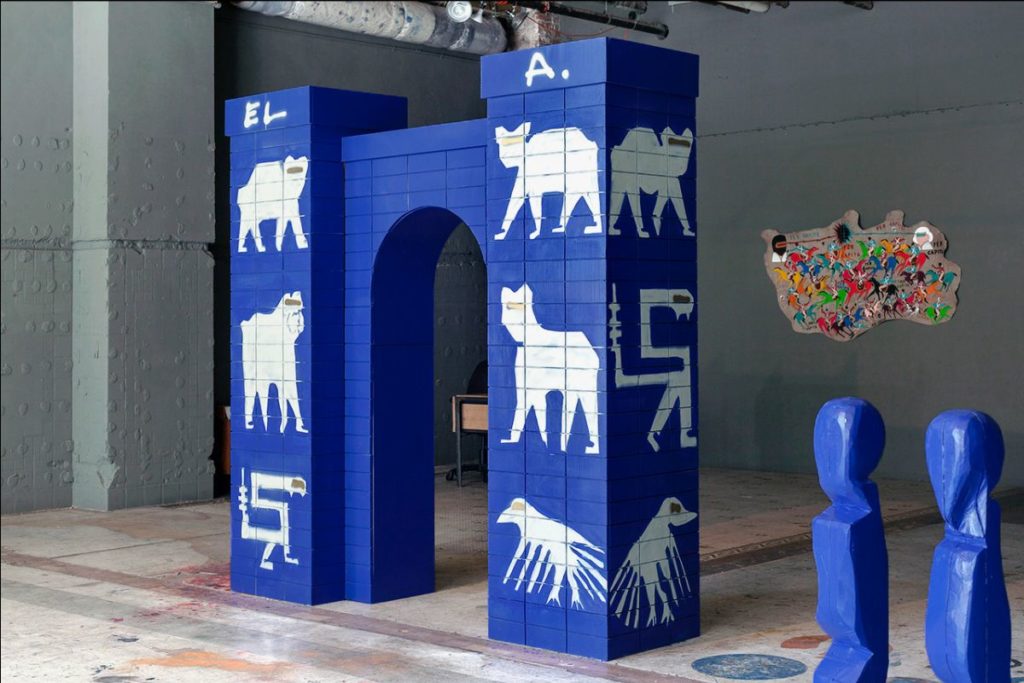
Umar Rashid, 8th Wonder: Portal to Los Angeles Past, Present and Future, 2021 (Courtesy of transformative arts. Photo by Monica Nouwens)
The exhibition includes a range of mixed media paintings and wall works, including depictions of surreal cartographic scenes of great battles with mounted armies and inexplicable lasers, rolling heads and swords galore. Accompanying individual portraits like character studies, tableaux taking aim at cross-purposed social dynamics, and views of injustice crying out for resistance and relief give a more intimate perspective on how history, even surreal versions of it, might unfold.
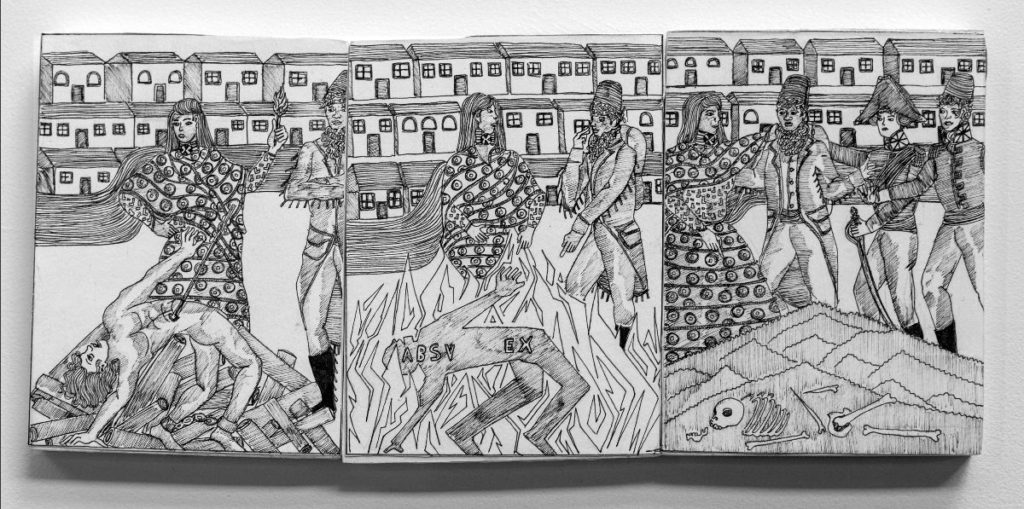
Umar Rashid at transformative arts
The titles of several works in the show, as is always the case with Rashid, spin a tale of poetic evocation and event specificity: 1794 St. Bertrand (St. Louis) Mugwayan, Shoshone trapper and interpreter prepares to execute her abusive Frenglish husband, while Pompey, body slave to the Bonnie Prince Charles Sidney Looks on. / The Bonnie Prince Charles Signey, former Pharaoh of Novum Eboracum (New York) and his lover, Achille St. Marc, explorer and fighter from the Caribbean, finish the immolation show and invite Mugwayan to join them on their journey to the Pacific.
But the main point of the COLA project was to explore the sculptural aspect of this world-building more deeply, which Rashid does in both unconventional and dimensional wall pieces, such as a ritual drum, heavily embellished ceremonial tapestry, upcycled energy pyramids, and the centerpiece of the installation – a representation of the famous Babylonian Ishtar Gate in Dodger Blue instead of lapis lazuli, with pitbulls and rattlesnakes in place of lions and asps.
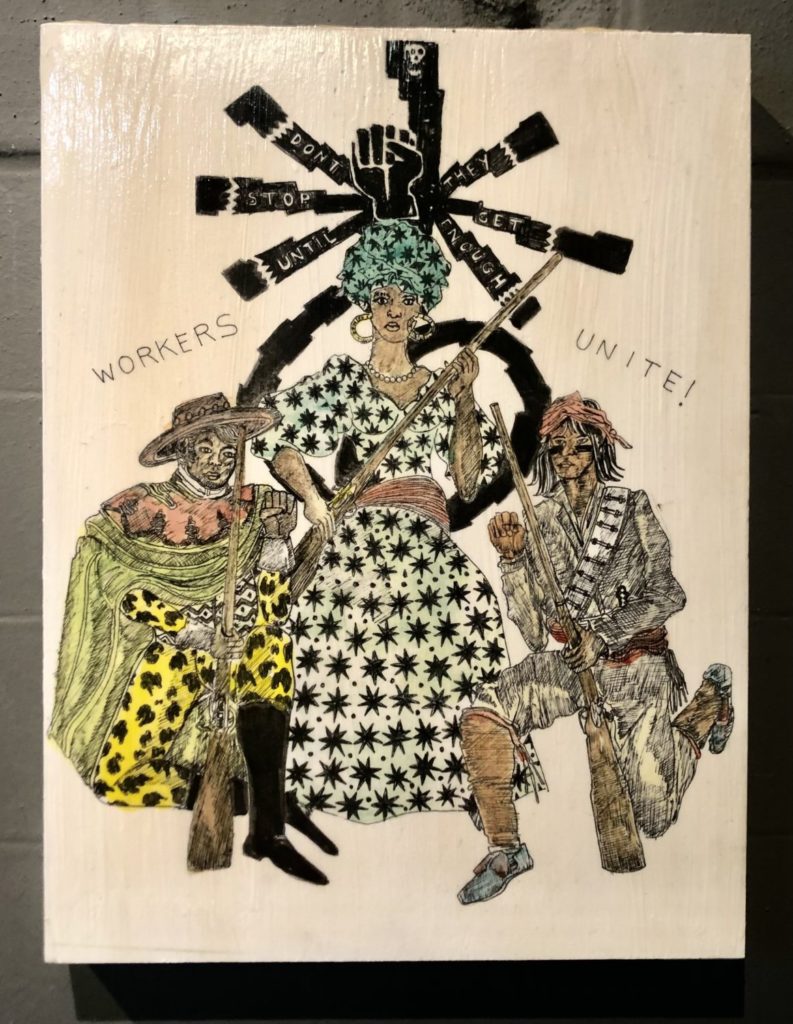
Umar Rashid, Worker’s Unite, 2017. Unique zero graphic transfer print with ink and acrylic on birch panel 12 x 9 inches (Courtesy of transformative arts)
What Rashid does is important and even at times quite heavy; its subjects are racism, death, struggle, exploitation and injustice and the pictures don’t pull any punches. At the same time, he has an irrepressible wit and a taste for ironic humor – a talent for landing blows with a wry joyfulness, charming surrealism, beguiling eye for detail and sometimes outright humor that makes the experience of viewing the work a pleasure. This cognitive dissonance is just the right state of mind to receive the fullness of Rashid’s complex of resonant metaphors, and to step into his world of fiction that is more true than the truths we’ve been taught.
Per Capita is on view through June 30 at transformative arts, 410 South Spring St., downtown; Monday – Friday, noon-5pm and by appointment; free; transformativenow.org.
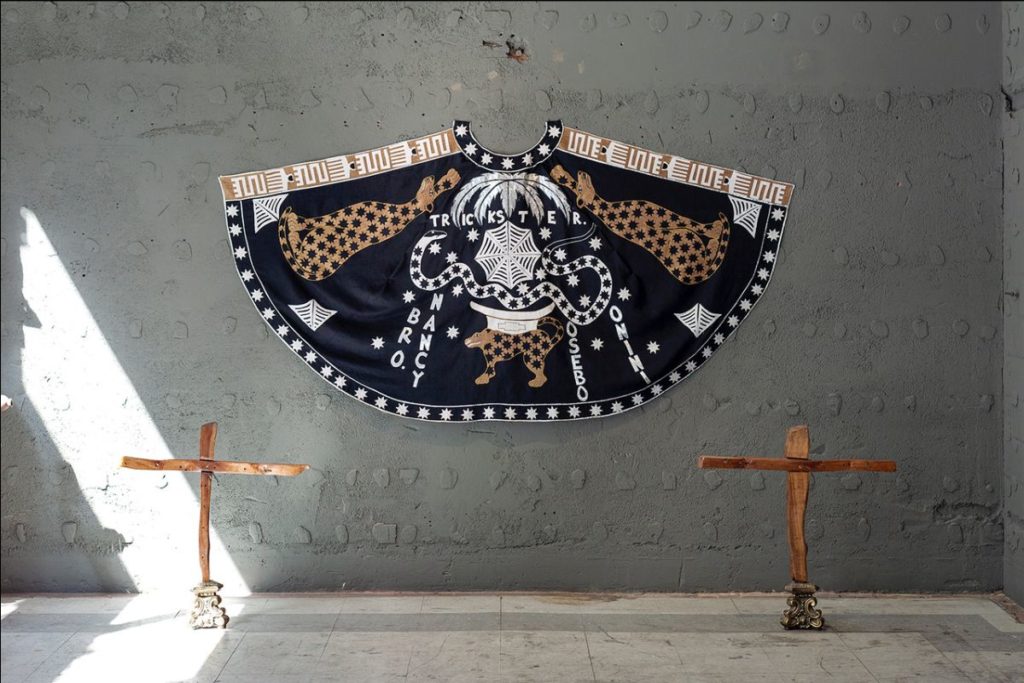
Umar Rashid, Trickster, 2019. Cotton applique on linen, gold thread 42 by 88 inches (transformative arts)
Advertising disclosure: We may receive compensation for some of the links in our stories. Thank you for supporting LA Weekly and our advertisers.

